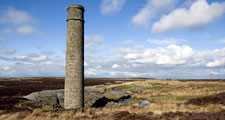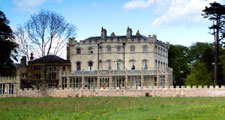Post Medieval
(1541-1899)
The exploitation of coal for domestic markets intensified in the 16th century with larger collieries developing along the Tyne exporting coal to the south of England and to Europe. Networks of waggonways spread south and west from the Tyne and the Wear as new collieries opened up across the northern coalfield. The lead mining industry began to emerge during the same period and by the 19th centrury the North Pennines had become the world’s leading lead ore field.
The growth of industrial populations fuelled changes in the agricultural economy, stimulating enclosure of the common town fields, which were largely enclosed in the 17th century by private agreement, and the more extensive common wastes, which were enclosed under private Acts of Parliament in the 18th century. In the dales the dual economy of mining and farming saw the new farms of miner-smallholders established in the moorland fringe and new intakes from the moor.
The town field enclosure brought hedges and trees and new farmsteads to the open farmland of the village town fields. The enclosure of the wastes introduced large rectangular fields bounded by thorn hedges and dry stone walls, new farms and plantations, and a new network of straight roads with broad verges. These later agricultural improvements, together with the development of country houses and ornamental parklands, were stimulated in part by the prosperity and modernising culture of colliery owners and industrialists.
The coal industry expanded rapidly in the 19th century when the development of the steam engine and the railway opened up new markets, allowed deeper mines to be drained and coal to be hauled greater distances. The Durham Coalfield played an important role in the early history of the railways with engineers like George Stephenson and Timothy Hackworth and entrepreneurs like Joseph Pease combining to develop some of the earliest railway lines.
New colliery towns and pit villages of terraced housing sprang up across the coalfield along with iron and steel and engineering works exploiting cheap coal and nearby reserves of iron ore and limestone in the North Pennines to the west. Heavy engineering associated with mining and railways developed closer to the eastern transport corridor in the south and along the major river valleys.
The population of the area increased dramatically with immigrants from rural Durham and Northumberland as well as from elsewhere in the British Isles and particularly from Ireland.
Many of the familiar features of the Durham landscape – hedgerows and dry stone walls, hedgerow trees, roads, railway lines, viaducts and mining settlements – date from this period. The physical remains of the coal mining industry were largely removed by the land reclamation programme of the late 20th century. The remains of the lead mining and quarrying industries are more conspicuous in the uplands where hushes and quarries scar the hillsides and isolated mine buildings, smelter flues and washing floors are scattered across the moors.



